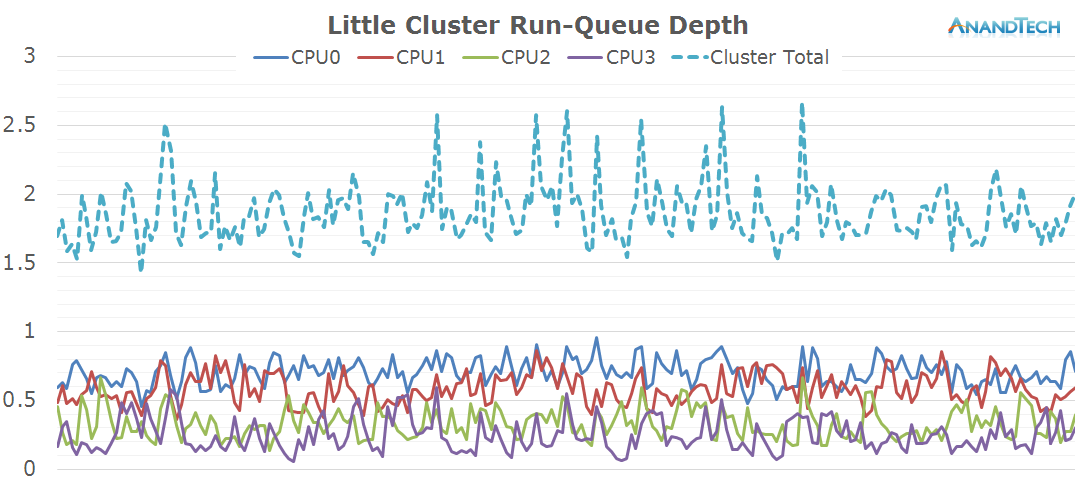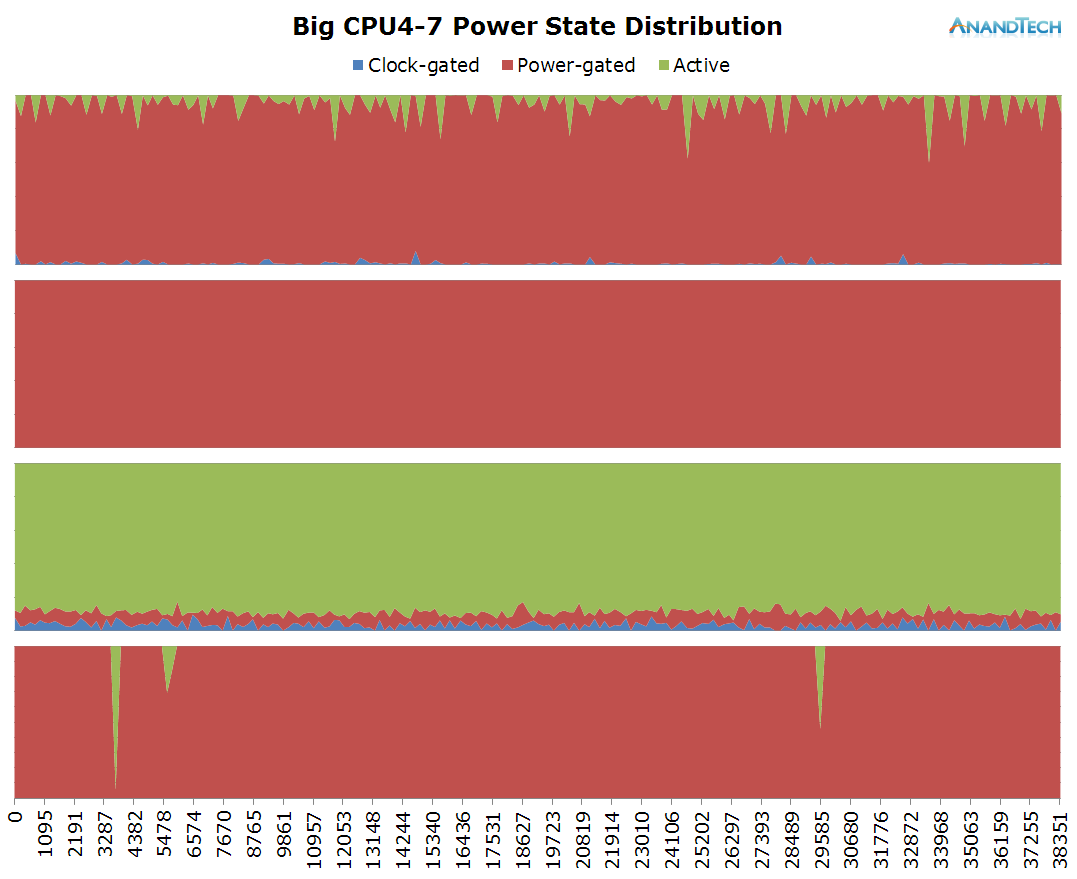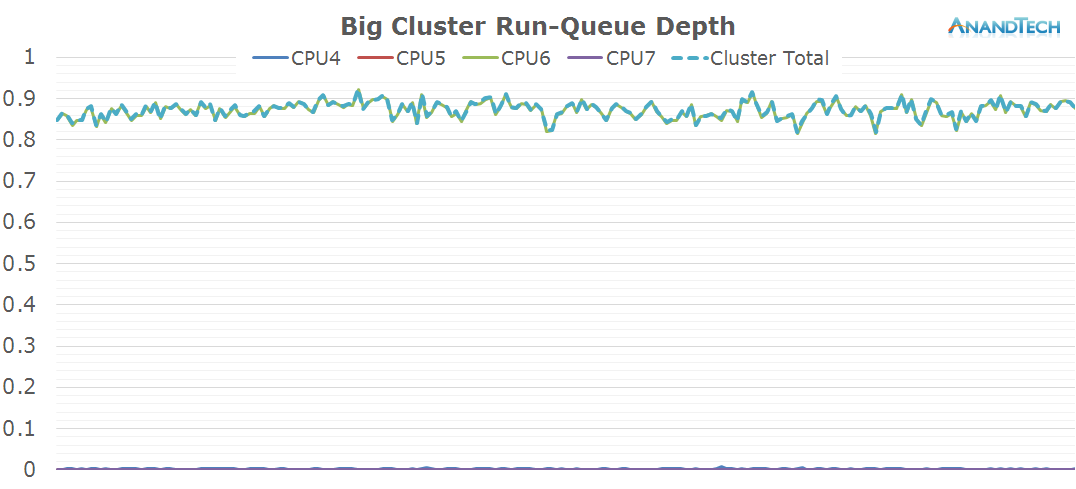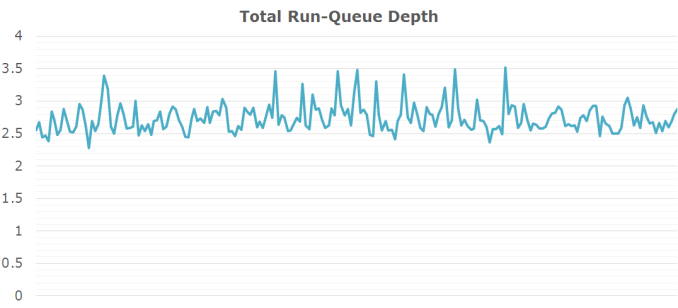The Mobile CPU Core-Count Debate: Analyzing The Real World
by Andrei Frumusanu on September 1, 2015 8:00 AM EST- Posted in
- Smartphones
- CPUs
- Mobile
- SoCs
Real Racing 3 Playing
The little cores see at least 3 major threads loaded onto them. The 4th core is doing some work as well, but quite a bit less than the first 3. What is extremely interesting here is the frequency distribution graph: The cores don't settle for any one frequency and make use full use of the full range of the cluster.
The behaviour of the big-cluster is clear-cut. There's only 1 significant thread that ever gets placed on the big cores. This is an ideal scenario for a big.LITTLE architecture as would there have been more than 1 thread, that secondary thread would have suffered from diminished efficiency as it wouldn't be able to run at the best perf/W frequency due to ARM's synchronous frequency planes between CPUs in a cluster.
The power-distribution graph does show the worrying anomaly of seeing CPU4 come out its power-collapse state for very small periods of time. This would be a source of inefficiency of either the scheduler or the CPUIdle framework needing to wake up that core for the sake of simple clean-up work instead of real load.
I think it's pretty safe to come to the conclusion that Real Racing 3 is coded with quad-core CPUs in mind as we see exactly 4 major threads loading the SoC's CPUs to various extent.

















157 Comments
View All Comments
Gigaplex - Thursday, September 3, 2015 - link
An interesting and thorough analysis, although I'm concerned at some of the assumptions made in some of the conclusions. Just because a queue of 4 threads makes all the 8 big.LITTLE cores active doesn't mean that the architecture is effective. For all we know, the threads are thrashing back and forth, draining precious performance per watt.darkich - Friday, September 4, 2015 - link
Andrei, your articles are in a league of their own. Thanks for the great workmelgross - Thursday, September 10, 2015 - link
I'm still not convinced. The fact that it's doing what it does on these chips doesn't mean that their performance is as good as it could be, or that power efficiency is as good. We really need to see two to four core designs, with cores that are really more powerful, to make a proper comparison. We don't have that with the chips tested.blackcrayon - Thursday, October 8, 2015 - link
Exactly. It should at least show a design with a small number of powerful cores. Obviously with Apple's A series chips you have the issue of dealing with a different operating system underneath, but can't they use a Tegra K1 or something?Hydrargyrum - Friday, September 25, 2015 - link
The stacked frequency distribution graphs would be a *lot* easier to read if you used a consistent range of different saturations/intensities of a single colour (e.g. go from bright=fast to dark=slow), or a single pass from red to blue through the ROYGBIV colour spectrum (e.g. red=fast, blue=slow), to represent the range of frequencies.By going around the colour wheel multiple times in the colour coding it's *really* hard to tell whether a given area of the graph is high or low frequency. The difference in colour between 1400/800, 1296/700, and 1200/600 are very subtle to say the least.
Ethos Evoss - Thursday, November 12, 2015 - link
anandtech always uses weird non-popular words on its own site type ''heterogeneous '' never heard in my life and even usa or uk ppl have to search in cambridge/oxford dictionary :DDDImmediately u can say it is DEFO NOT USA or UK website.. They do not use such difficult words AT ALL :)
Ethos Evoss - Thursday, November 12, 2015 - link
ANd mainly they use when it comes to china products .. like mediatek or kirin or big.little topic etc..This site is DEVOURED or we could say powered by apple.inc :)